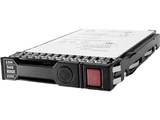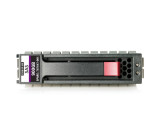HPE Solid State Drives (SSD) for ProLiant Gen5/Gen6/Gen7 Servers: Enhancing Performance and Reliability
Introduction
In today’s fast-paced digital world, data processing speed and reliability are critical factors for businesses of all sizes. Hewlett Packard Enterprise (HPE), a global leader in IT infrastructure, has consistently provided cutting-edge storage solutions to meet these demands. One of their standout offerings is the range of Solid State Drives (SSDs) designed for ProLiant servers. While much of the focus is on newer generations, the ProLiant Gen5, Gen6, and Gen7 servers continue to play a significant role in various business environments. This article will explore how HPE SSDs enhance the performance and reliability of these legacy servers.
The Need for SSDs in Legacy Servers
Although traditional Hard Disk Drives (HDDs) have served the industry well for decades, they have inherent limitations, particularly in terms of speed and durability. SSDs, with their faster data access times and lower power consumption, offer a compelling alternative. For organizations still utilizing ProLiant Gen5, Gen6, and Gen7 servers, upgrading to SSDs can provide a significant performance boost without the need for a complete system overhaul.
Key Benefits of SSDs:
Speed: SSDs offer significantly faster read and write speeds compared to HDDs. This can greatly reduce boot times, application load times, and improve overall system responsiveness.
Durability: With no moving parts, SSDs are less prone to physical damage and wear, making them more reliable over time.
Power Efficiency: SSDs consume less power than traditional HDDs, which can reduce energy costs and heat output, especially in data centers.
Noise Reduction: The absence of moving parts also means that SSDs operate more quietly, which is an added benefit in office environments.
HPE SSD Options for ProLiant Gen5/Gen6/Gen7 Servers
While SSDs are a standard option in modern servers, HPE has ensured that their legacy ProLiant servers can also benefit from this technology. Below, we discuss the compatibility and features of HPE SSDs for the ProLiant Gen5, Gen6, and Gen7 servers.
1. Compatibility Considerations
The ProLiant Gen5, Gen6, and Gen7 servers were originally designed with HDDs in mind, but HPE has developed SSDs that are fully compatible with these older systems. However, it is essential to check your server's firmware version and ensure it supports SSDs. Additionally, depending on your specific server model, you may need to use SSDs with SATA or SAS interfaces.
SATA SSDs: These are generally compatible with most ProLiant Gen5, Gen6, and Gen7 servers. SATA SSDs offer a balance between performance and cost, making them a popular choice for upgrades.
SAS SSDs: For environments that require higher performance and reliability, SAS SSDs are a suitable option. They provide better error correction and faster data transfer rates compared to SATA drives.
2. Capacity and Performance
HPE offers a variety of SSD options with different capacities and performance levels to suit various workloads. For ProLiant Gen5, Gen6, and Gen7 servers, the following are some popular SSD models:
HPE 240GB SATA SSD: Ideal for boot drives or systems with moderate storage needs.
HPE 480GB and 960GB SATA SSDs: Suitable for general-purpose workloads that require more storage capacity.
HPE 400GB and 800GB SAS SSDs: These drives are designed for high-performance applications and databases, where speed and reliability are critical.
3. Advanced Features
HPE SSDs come with several advanced features that enhance their performance and reliability, even in older server environments:
Wear Leveling: This technology helps extend the lifespan of SSDs by evenly distributing write and erase cycles across the drive’s memory cells.
Error Correction: HPE SSDs feature advanced error correction algorithms that detect and correct data errors, ensuring data integrity.
End-to-End Data Protection: This feature safeguards data as it travels from the host system to the SSD and back, minimizing the risk of data corruption.
Upgrading to SSDs: What to Consider
When upgrading your ProLiant Gen5, Gen6, or Gen7 server to SSDs, there are a few key considerations to keep in mind:
1. Firmware Updates
Ensure that your server’s firmware is up to date. Older firmware versions may not fully support SSDs, leading to compatibility issues or suboptimal performance. HPE regularly releases firmware updates that improve SSD compatibility and performance, so it’s worth checking for the latest versions.
2. RAID Configurations
If your server uses RAID configurations, you’ll need to verify that your RAID controller supports SSDs. HPE offers several RAID controllers compatible with both HDDs and SSDs, allowing for seamless integration into existing setups.
3. Cost vs. Benefit Analysis
While SSDs are more expensive than traditional HDDs, the performance gains can justify the investment, especially for critical applications. It’s essential to evaluate your organization’s specific needs and determine whether the cost of upgrading to SSDs is outweighed by the benefits of increased speed, reliability, and power efficiency.
4. Data Migration
Upgrading to SSDs often requires migrating data from existing HDDs. Proper planning and tools are necessary to ensure a smooth transition. HPE offers various data migration solutions to help with this process, minimizing downtime and reducing the risk of data loss.
Conclusion
HPE Solid State Drives (SSDs) offer a powerful and cost-effective way to extend the life of ProLiant Gen5, Gen6, and Gen7 servers. By upgrading to SSDs, businesses can achieve significant improvements in speed, reliability, and energy efficiency without the need for a complete server replacement. Whether you’re running critical applications, databases, or general workloads, HPE SSDs provide a robust storage solution that can enhance the performance of your legacy ProLiant servers.
Investing in SSDs for your ProLiant Gen5, Gen6, or Gen7 servers not only future-proofs your infrastructure but also maximizes your existing hardware’s potential, ensuring that your business continues to operate smoothly in today’s demanding digital environment.
Recent Posts
-
Powering Enterprise Workloads: HPE 900GB 15K RPM SAS-12Gbps Smart Carrier Drive for ProLiant Gen9 & Gen10
In today’s demanding enterprise IT environments, businesses require high-performance, reliable …Mar 3rd 2025 -
Unleashing Enterprise Power: HPE 900GB 10K RPM SAS-12Gbps HDD for High-Performance Storage
In enterprise storage solutions, reliability, performance, and scalability are crucial factors. The …Mar 2nd 2025 -
Power, Speed, and Reliability: The HPE 600GB 15K RPM SAS Drive for Enterprise-Grade Storage
Introduction In today’s fast-paced digital world, businesses require reliable, high-speed, and …Mar 1st 2025




